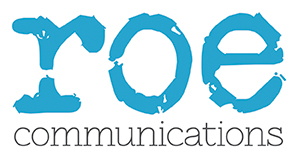Most business schools want to get more press coverage.
But if you are a busy marketing communications director, you’ll know that this is often easier said than done.
Looking at your diary today, you could be:
- Facilitating a marketing team meeting
- Carrying out performance reviews for a direct report
- Reviewing your digital analytics with colleagues
- Getting an internal briefing about a school-wide initiative
- Preparing a weekly report for the Dean or other school Directors
- Reviewing your brand with an external consultancy
- Preparing budget forecasts
And while you may have some internal resource (for instance a press officer from your parent University), they may have other priorities.
No wonder many marketing communications directors say that it’s hard to find the time for consistent media relations activity.
Budget crunch
The global pandemic has seen our working lives turned upside down. And it’s brought an additional squeeze on under-pressure marketing communications departments.
Our report with EFMD and Carrington Crisp (October 2020), found that by far the biggest challenge for professional services staff in business schools was lack of budget (47%). In addition, a third (31%) worried about the lack of staff.
This looks unlikely to change any time soon. Three-quarters of people in the same report expected their budget to either stay the same or decrease over the next three years.
Volume tactics
Getting press coverage is more important than ever for business schools who want to build their reputation or attract more students.
But turning to ‘volume tactics’ to get your voice heard can do more harm than good.
They include:
- More press releases and pitches to the media
- Wider, untargeted lists of journalists
- Spreading yourself thinly across multiple topics
- Little targeting or tailoring
- News that is more about them, than a journalist’s readers.
This ‘spray and pray’ strategy might yield some results. But it unlikely to deliver a long-term reputation. What’s more, it could have the effect of putting off some journalists that could have been allies.
“So, what are we to do?”
If you are rushed off your feet, our advice is to step back and re-evaluate your media relations approach – and crucially – the impact that it is having.
It’s about getting more out of less.
Tips for getting better press coverage when resources are tight
[Spoiler – it’s all about FOCUS.]
#1 Focus on your areas of expertise
Imagine that you are icing a cake. You can’t decide whether your topping should be green or blue. So, you add a bit of both. And what happens? Instead of the aquamarine hue you imagined, you end up with an unattractive, sludgy grey.
Enticing? Not really.
It’s similar to business school media relations. By trying to mix up too many topics at once, you end up with a bit of a mishmash. It’s not entirely clear to anyone where your expertise lies or what you stand for.
Concentrate on your core strengths instead.
#2 Focus on storytelling
If you truly want to understand journalists, think of them as storytellers.
And all good stories have a beginning, middle and end – and elements of struggle and surprise.
If you want examples, you need to look no further than Hollywood blockbusters such as Star Wars, Harry Potter or The Matrix.
Before you pitch stories to the press, think about how your story is structured. Where does your protagonist start and what obstacles have they overcome? What help have they had along the way, and what was the surprising truth that they discovered? How can you show, rather than tell the story?
This approach is more likely to get you press coverage.
#3 Focus on high-impact media outlets
When you are juggling priorities, it’s a tall order to constantly engage with the press.
Our advice?
Re-visit your media list and focus on the outlets that are most influential amongst your target audiences.
You might find that that list is shorter than you are used to. But don’t panic. Cultivating relationships with key journalists can produce much better results.
#4 Focus on being relevant
Media outlets are driven by their readers. And with an increasing focus on clicks and shares, making sure that you know what their readers (viewers, or listeners) care about, is critical.
Think about the last time you got a sales message from someone on LinkedIn? How did it make you feel? That they had bothered to understand you and your organisation? Or that they were just talking about themselves?
It’s the same principle with trying to get press coverage.
Here are five useful questions to help you become more relevant:
- What big question does our story connect to?
- Does it show a trend – something starting or dying out?
- Is it counter-intuitive or surprising?
- Why should the audience care about what we have to say?
- What do we have to support it – e.g., research, pictures, case studies, quotes?
#5 Focus on plain English
“Think like a wise man but communicate in the language of the people.”
We love this quote by W.B.Yeats.
If a story is too complicated, it will put journalists off. Jargon, over-technical terms or the inability to explain things simply are guaranteed to have them reaching for the delete button.
Ensure that every word is easy to understand. But that’s not an excuse for being boring – a memorable quote can lift a story.
#6 Focus on consistency
We’ve said it before, but consistency is probably your most under-rated media relations tool.
In our early PR days, we used to say that today’s story is tomorrow’s fish and chip paper.
Even in today’s digital age, this is so true.
Even if you are short of time and resource, it’s important to schedule engagement with your target media.
Building a reputation is a long-term game and it needs regular media relations activity to succeed.
If you are struggling to find time for media relations, our Reboot Your Reputation Programme could be what you need. In just two months, our tried and tested method will help you re-focus and get your media relations back on track.

